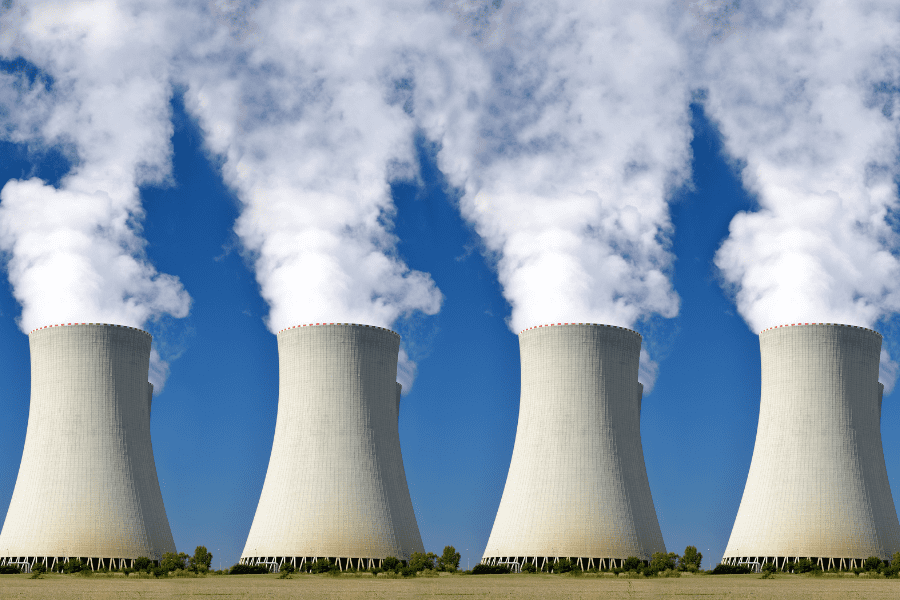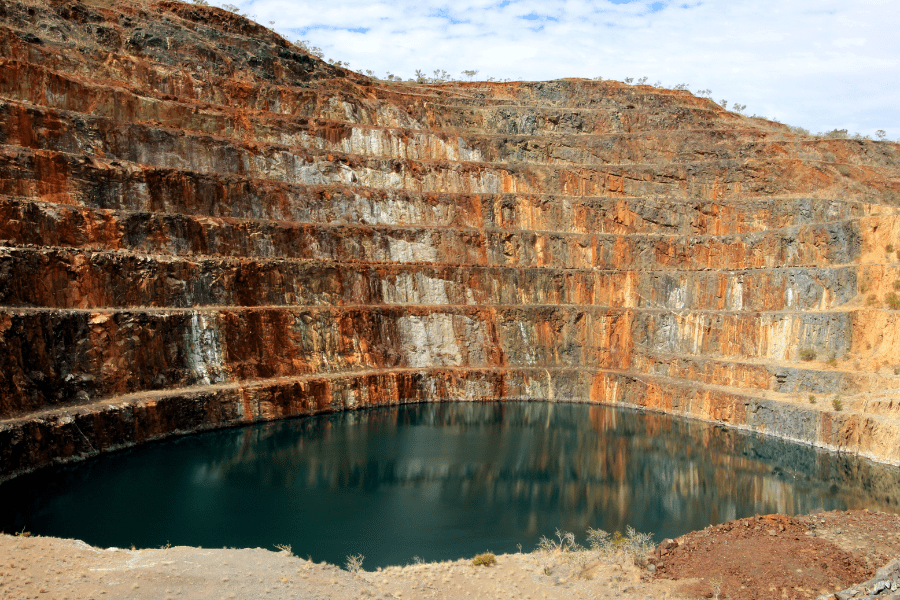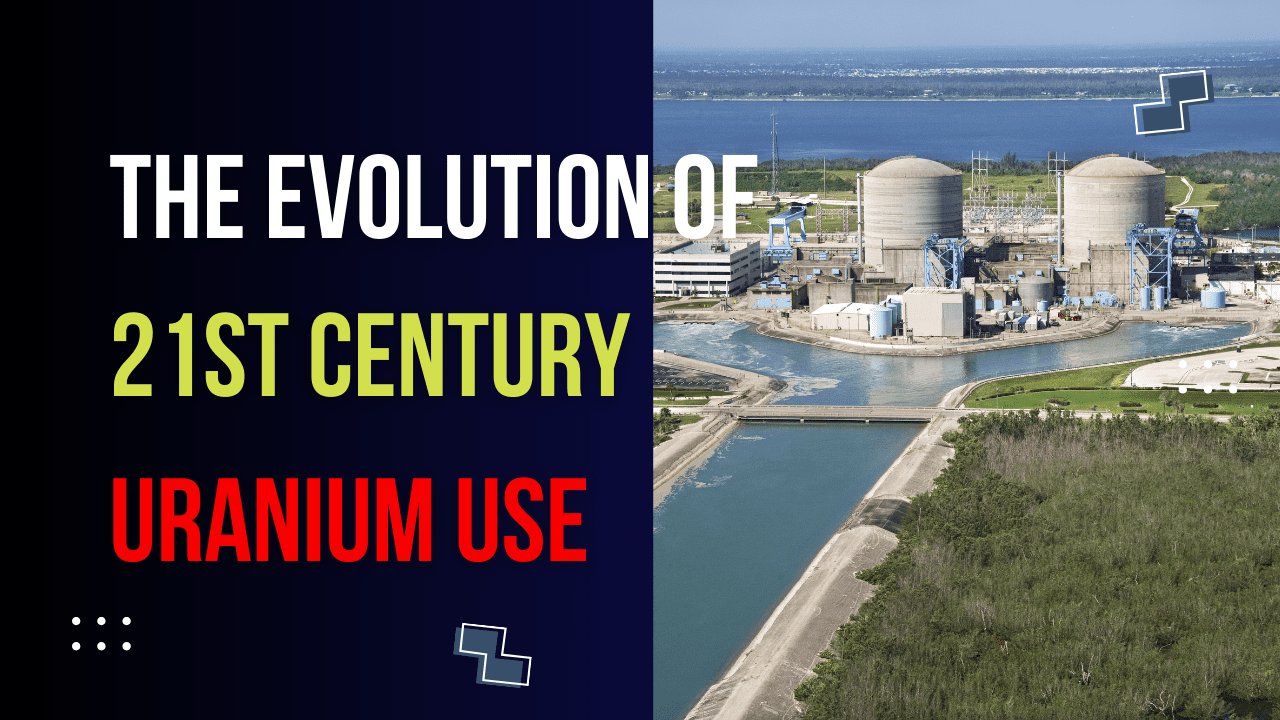Table of Contents
Uranium use has been a significant factor in energy production since its discovery in 1789 by the German chemist Martin Heinrich Klaproth. Initially isolated from a mineral known as pitchblende, the element was named after the planet Uranus, reflecting the astronomical community’s interest at that time. With its atomic number standing at 92, uranium ranks among the heaviest naturally occurring elements on Earth. Primarily utilized as fuel in nuclear power plants, uranium’s journey from its discovery to its role in the modern world underscores its profound impact on our lives. This article delves into the exploration of uranium’s development over the years and its enduring influence on society.
Discovery and properties of uranium

In nature, uranium exists in two main isotopes: uranium-235 and uranium-238. Of these, uranium-235 is the only isotope in nature that can undergo a fission reaction and is used as a key element in nuclear power generation and nuclear weapons. Uranium-238, on the other hand, does not fission, but it can absorb neutrons and turn into plutonium-239, which plays an important role in the reprocessing of nuclear fuel.
Uranium’s chemical properties diversify its range of uses. In its natural state, uranium is mostly uranium-238, which exists in a relatively stable state. Uranium has a high density and is slightly heavier than lead and lighter than gold. This high density is an important property for military applications, especially when used in body armor or as a penetrator in ballistic missiles.
The radioactivity of uranium is an important consideration in its use and handling. In its natural state, uranium has relatively low levels of radioactivity, but the risk increases when it is enriched in its pure form or subjected to certain chemical treatments. Uranium emits radiation, which can cause oxidation heat, which can increase the risk of fire. Therefore, anti-oxidation measures and safe storage are required when handling uranium.
In terms of scientific and industrial applications, the alpha particle emission of uranium-238 is utilized for geologic dating. This radioactive decay process can be used to estimate the age of the Earth and the timing of various geologic events, and it is an important tool for understanding changes in ancient environments.
The discovery and subsequent study of uranium have enabled a wide range of applications in scientific research using radioisotopes, as well as the development of nuclear technology. However, the radioactivity and chemical hazards of uranium require caution in its handling and use and are a reminder of the need for continued research and regulation to minimize its impact.
Applications and impacts of uranium use

The applications of uranium are very broad due to its radioactive nature, and it plays an important role in many different industries and areas of scientific research. In this section, we take a closer look at the main applications of uranium and its effects on humans and the environment.
Nuclear power generation
Uranium is the primary fuel for nuclear power generation. Specifically, uranium-235 undergoes a fission reaction, which releases large amounts of energy. This energy is used to generate electricity in a power plant. Nuclear power is often seen as an environmentally friendly alternative to traditional power generation using fossil fuels, as it produces no carbon dioxide emissions. However, the disposal of spent nuclear fuel and the risk of nuclear accidents are important considerations for nuclear power.
Medical applications of uranium use
Uranium and its radioisotopes also play an important role in the medical field. Radioisotopes used in radiation therapy are used to destroy cancer cells. In addition, imaging diagnostics using radioisotopes is an important tool for diagnosing diseases and monitoring the course of treatment. Other radioactive materials derived from uranium are more widely used for these purposes than uranium itself.
Military applications of uranium use
Uranium also has important military applications due to its high density. Warheads using heavy uranium have high penetrating power, which is used to destroy hardened targets. However, this use is also controversial due to the potential risks to the environment and human health.
Industrial and scientific research
The alpha particle-emitting properties of uranium-238 are utilized in scientific research, particularly in geologic dating. This allows scientists to estimate the age of the Earth and other celestial bodies. Uranium is also used as a colorant in glass and ceramics, which gives crafts their distinctive green or yellow color.
Human and environmental effects
The radioactivity of uranium can have harmful effects on humans and the environment. Long-term radiation exposure can cause a variety of health problems, including cancer, and kidney damage and bone damage, among others, are potential risks of uranium exposure. Environmentally, uranium mining and nuclear waste disposal can result in the release of radioactive materials, which can negatively impact local ecosystems and water quality.
Applications of uranium require a balance between its benefits and risks. Efforts to ensure the safe and responsible use of uranium in these applications are an important consideration in both scientific research and policy decisions.
Human health effects of uranium use

The radioactive nature of uranium can affect the human body in a variety of ways, depending on the form of uranium, the duration of exposure, and the amount of exposure. Here we take a closer look at the main effects that uranium exposure can have on the human body.
Cellular DNA damage of uranium use
One of the most serious health risks of uranium exposure is radiation-induced cellular DNA damage. Radioactive materials emit alpha, beta, and gamma radiation, which can interact directly with human cells and damage their DNA. DNA damage causes cells to divide abnormally, which increases the risk of developing diseases such as cancer.
Kidney damage of uranium use
Uranium exposure can be particularly harmful to the kidneys. Because the kidneys are the main organs that filter and excrete uranium from the body, when uranium enters the body, it can travel to the kidneys and damage kidney cells. This causes kidney dysfunction and, in severe cases, can lead to loss of kidney function. Kidney damage is generally attributed to the chemical toxicity of uranium, which occurs as the body tries to process it.
Bone damage and cancer of uranium use
Uranium can accumulate in the bones, which can affect bone health in the long term. Uranium that accumulates in the bones emits radiation, which can cause damage to bone tissue and promote the growth of cancer cells. Bone cancer is considered one of the long-term risks of uranium exposure.
Reproductive effects
Uranium exposure can negatively affect reproductive function in both men and women. Studies have shown that uranium exposure can cause decreased fertility, damage to reproductive cells, and pregnancy-related problems such as toxicosis. Uranium exposure also has the potential to cause genetic mutations, which can affect future generations.
Weakened immune system
Uranium exposure is also known to weaken the immune system. Radiation can damage cells in the immune system, which can lead to decreased resistance to infection and increased susceptibility to disease. A weakened immune system means that exposed individuals are more susceptible to a variety of health problems.
To minimize the health risks associated with uranium exposure, it is important to take appropriate protective measures and undergo regular health screenings, especially for those who work with uranium. Understanding and managing the effects of uranium is essential to protecting personal health.
Environmental considerations

The environmental considerations associated with the use of uranium, including its release and potential impacts, are an important aspect of sustainable development and environmental protection. Here, we review the main points related to the environmental impacts of uranium.
Uranium mines and mine wastewater
Uranium mine operations generate large amounts of waste and mine wastewater during the process of mining the mineral. These effluents and wastes can contain radioactive materials and, if not managed properly, can leak into groundwater and the surrounding environment. Groundwater contamination has the potential to contaminate drinking water sources, which can have harmful effects on humans and wildlife.
Nuclear waste management
The uranium fuel used in nuclear power plants generates high-level radioactive waste. These wastes emit radioactivity over long periods of time, so safe handling and storage are essential. Safe disposal methods for high-level nuclear waste include geologic disposal, which involves isolating and storing the waste deep underground. These methods must follow strict standards and procedures to prevent the release of radioactive material into the environment.
Radioactive contamination and biodiversity
Environmental spills of uranium and related nuclear waste can negatively impact ecosystems. Radioactive contamination affects biodiversity through soil, water, and air and can be particularly damaging to sensitive species. Radioactive contamination can affect the survival, reproduction, and growth of plants and animals, disrupting the balance of ecosystems.
Considerations as a sustainable energy source
Nuclear energy, including uranium, is one of the important options to combat climate change as a low-carbon energy source. However, given the environmental impacts of nuclear energy, particularly nuclear waste management and the risk of nuclear accidents, its role as a sustainable energy source needs further discussion and evaluation.
Environmental monitoring and impact assessment
To minimize the environmental impacts associated with uranium mine operations, nuclear waste management, and nuclear power plant operations, ongoing environmental monitoring and impact assessments are critical. This enables early detection of radioactive material releases into the environment and enables appropriate action to be taken. In addition, the development and implementation of technical and managerial measures to protect the environment are essential for sustainable uranium use.
The environmental considerations of uranium require extensive efforts aimed at minimizing the risks associated with its use and ensuring long-term protection for humans and the environment. Meeting sustainable development goals and environmental protection standards requires responsible management and strict regulation of all activities related to uranium use.
Uranium and a sustainable future
The discovery and subsequent development of uranium have provided humanity with remarkable scientific advances and revolutionized the way energy is produced. Nuclear energy plays an important role in meeting the world’s expanding energy needs, especially its potential as a low-carbon energy source that reduces carbon emissions. However, the environmental and health risks associated with uranium use require careful management and regulation. We need to rethink the role of uranium and our approach to it in our journey towards a sustainable future.
Uranium as a sustainable energy source
Uranium and nuclear technology are important assets in the fight against global warming and climate change. However, nuclear waste management, the risk of nuclear accidents, and health concerns from radiation exposure are important factors to consider. To manage these risks, it is essential to continuously improve safety standards and apply the latest technologies to make nuclear power generation safer. In addition, reprocessing and recycling used fuel and developing sustainable waste disposal options play a key role in minimizing environmental impacts.
Responsibility for environmental protection and health
The responsibility for protecting the environment and public health from uranium use must be shared by all stakeholders in the uranium industry. This must be done throughout the entire lifecycle of uranium, from mine operations to nuclear power generation to waste management. Ongoing research and monitoring must be conducted to assess the environmental and health risks of uranium, and effective regulatory policies and safety standards must be established based on this information.
Innovation and research for a sustainable future
Sustainable advances in uranium-related technologies and policies are possible through innovation and ongoing research. Designing new reactors, developing safer nuclear fuel cycles, and integrating nuclear energy with renewable energy sources are ways to increase the sustainability of nuclear energy. It is also important to increase social acceptance through cooperation, transparency, and dialogue with communities involved in the uranium industry.
Conclusion of uranium use
Uranium and nuclear energy have a role to play in the journey towards a sustainable future, but this role requires a responsible approach that minimizes environmental and health risks and prioritizes public safety and environmental protection. To achieve the goals of sustainable development and environmental protection, all activities involving the use of uranium must be strictly regulated and well managed, which requires international cooperation and commitment. Our future depends on the sustainable use of all resources, including uranium, and this requires continued effort and innovation.
Discover More
If this article made you happy and taught you something, I’m sure our next article will do the same for you. Each piece is carefully written to help you understand things better and enjoy reading more. So, to keep exploring and having fun, just click on this link to go to our next story.
The Helium Shortage : A Precious Gas Facing a Global Shortage – ReViewMaster DEN (rvmden.com)



